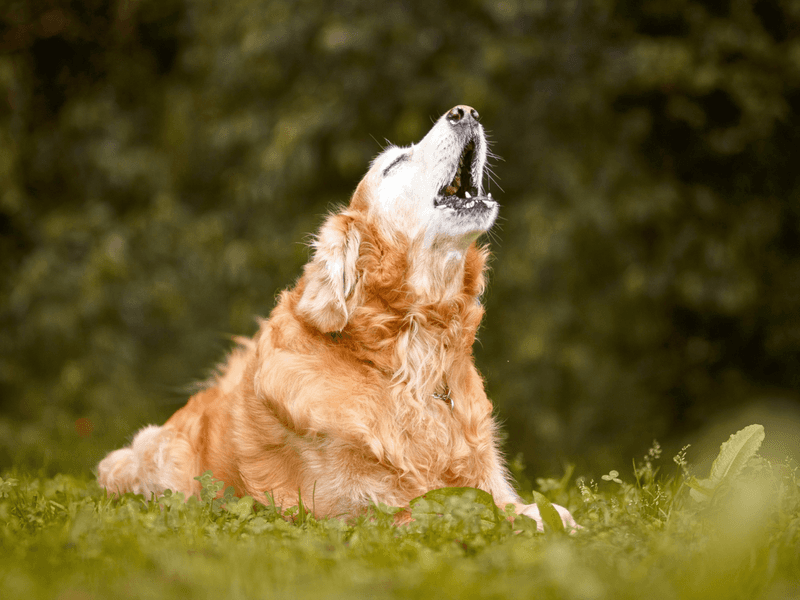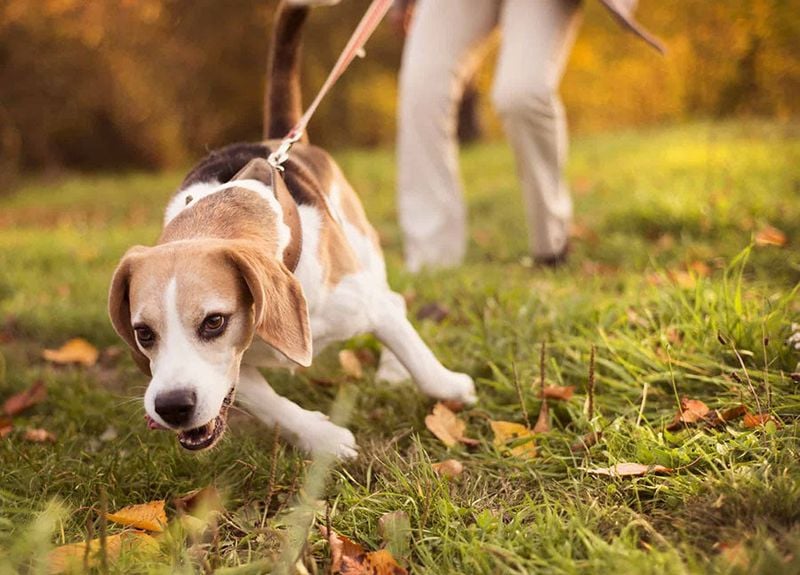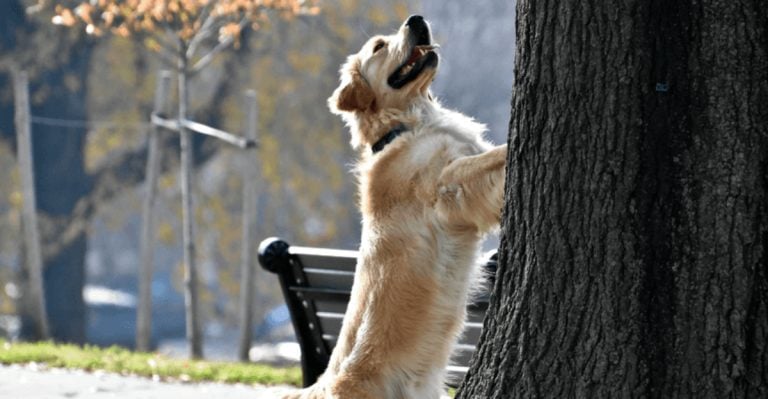15 Most Common Bad Dog Behaviors And How You Can Correct Them Before They Get Out of Hand
There’s no denying it—dogs are incredible. They love us unconditionally, make us laugh when we least expect it, and are often better listeners than most humans.
But even the most lovable pups have their less-than-perfect moments. One minute they’re cuddling on the couch, the next they’re chewing your favorite sneakers into oblivion. Sound familiar?
Bad behavior in dogs doesn’t mean you’ve failed as a pet parent—it just means your pup needs a little guidance (and probably a lot of treats).
Most problematic habits don’t pop up overnight, and with patience and the right techniques, they can usually be turned around. The real trouble starts when we ignore the early warning signs or brush them off as “just a phase.”
Before you know it, your dog’s quirks become full-blown headaches.
This article breaks down 15 of the most common bad dog behaviors that owners face—from excessive barking and leash pulling to more serious issues like aggression and separation anxiety.
But we’re not here to shame or scold—just to help you understand why these behaviors happen and how you can fix them before they get out of hand.
Whether you’re a new dog owner or a seasoned pack leader, this guide offers practical, vet-backed, and trainer-approved strategies to build better habits and create a happier home for everyone (yes, even the cat).
Because behind every bad behavior is a chance to strengthen the bond between you and your best friend—and that’s worth every effort.
1. Excessive Barking
A barking dog is trying to communicate—but sometimes, they just won’t stop. Whether it’s triggered by the mailman, boredom, or the wind brushing against a tree, constant barking can wear on your nerves and your neighbors’ patience.
To curb it, start by identifying the trigger. Is it anxiety, excitement, or attention-seeking?
Once you’ve narrowed it down, redirect with training commands like “quiet” or “enough,” and reward silence immediately. Avoid yelling—it sounds like you’re barking back. Instead, build calm behaviors through patience and consistency.
2. Jumping on People
While a jumping pup may be cute at 10 pounds, it’s a whole different story at 60. Dogs jump to greet, seek attention, or show excitement—but it’s not always welcome, especially to guests.
Correct the habit by ignoring the behavior completely. Turn away and avoid eye contact until all four paws are on the ground.
Then, reward calmly. Reinforce a “sit” command at doorways and when greeting people. Teaching your dog that calm behavior earns affection works better than scolding ever will.
3. Pulling on the Leash
Walking your dog shouldn’t feel like water-skiing. Many dogs naturally pull due to excitement or lack of leash training—but it can lead to frustration or injury if left unchecked.
Use a front-clip harness to reduce pulling power and practice short sessions focusing on loose-leash walking. Stop the moment your dog pulls and only move forward when the leash is slack.
Teaching a cue like “let’s go” or “heel” helps create structure and keeps the walk enjoyable for both of you.
4. Chewing on Furniture or Shoes
Dogs don’t know your Italian leather loafers aren’t chew toys. Chewing is natural—especially for puppies—but if it becomes destructive, it needs addressing fast.
Start by removing temptations. Store shoes out of reach and limit access to off-limits rooms.
Then, offer acceptable alternatives like durable chew toys or frozen treats. Supervise closely and redirect when necessary. Praise and reward when they chew appropriately to reinforce the right habit.
5. Separation Anxiety
Does your dog panic when you leave—even for a few minutes? Chewed doors, barking, or accidents while you’re away are common signs of separation anxiety.
Start by easing into departures. Practice short exits, gradually increasing your time away.
Avoid dramatic goodbyes and hellos. Instead, keep it calm and low-key. Puzzle toys, calming music, or a worn T-shirt can also provide comfort. In more severe cases, consult a trainer or vet to explore behavioral therapy or medication support.
6. Begging at the Table
Those puppy eyes can be hard to resist, but feeding your dog from the table sets a precedent that’s tough to break. It also encourages poor manners and even food aggression.
The fix? Never give in—ever. Be consistent and have everyone in the house on board. Teach your dog to stay on a designated mat during mealtimes and reward them afterward. Over time, they’ll learn that the kitchen isn’t their buffet line.
7. Digging Up the Yard
If your backyard looks like a lunar landscape, your dog might be bored, hot, or channeling their inner treasure hunter. Digging is often instinctual, but it can become a real problem fast.
Redirect the behavior by providing a designated digging zone filled with sand or loose dirt and hide treats or toys inside. Give your dog more exercise and stimulation throughout the day.
Blocking off prized garden areas and supervising outdoor time can also prevent sneak attacks on your tulips.
8. Aggression Toward Other Dogs
Growling, lunging, or snapping at other dogs is serious and shouldn’t be ignored. It may stem from fear, lack of socialization, or past trauma—and without intervention, it can escalate quickly.
Early socialization is key. If your dog is already reactive, start working at a distance from other dogs and reward calm behavior. Gradually decrease the space while maintaining control.
Avoid forced interactions and consider hiring a certified trainer to guide you through positive reinforcement-based desensitization techniques.
9. Ignoring Recall
Nothing is more terrifying than calling your dog… and getting the cold shoulder as they sprint in the opposite direction. Ignoring recall puts your dog at risk and chips away at trust.
Practice “come” in distraction-free areas using high-value rewards like chicken or cheese.
Keep your tone excited and never call them for punishment. Make coming to you the best party ever. Use long leads in open areas for safe training and gradually build toward off-leash reliability.
10. Stealing Food Off Counters (Counter Surfing)
Some dogs are stealthy snack thieves—leaping up to grab whatever smells tasty. This “counter surfing” not only ruins dinner but can lead to accidental poisoning.
Prevention is key: keep counters clear and teach a solid “leave it” command. If your dog jumps up, avoid yelling and simply guide them away.
Consistent boundaries, combined with mental enrichment and scheduled meals, will help eliminate their need to go food-hunting in the first place.
11. Potty Accidents Indoors
Even house-trained dogs can backslide, especially during stressful events or changes in routine. Accidents indoors are frustrating, but punishment only makes things worse.
Instead, reestablish structure. Take your dog out on a consistent schedule, praise them lavishly for going outside, and supervise or confine them when you can’t watch closely.
If accidents persist, rule out medical issues and consider revisiting crate training or using potty bells as a cue system.
12. Chasing Cars, Bikes, or Joggers
Fast-moving objects can trigger a strong prey drive, and dogs often chase out of excitement or instinct. But chasing cars or people is dangerous—for your dog and everyone else.
Start with basic obedience: teach “stay,” “watch me,” and impulse control commands.
Use controlled exposure to triggers and reward calm behavior. A secure leash and harness combo is non-negotiable here, and in extreme cases, you may need a behaviorist to step in.
13. Resource Guarding (Toys, Food, People)
If your dog stiffens, growls, or snaps when someone approaches their food, toys, or even you, that’s resource guarding. It’s rooted in fear of losing something valuable—and can escalate quickly.
Avoid grabbing things away. Instead, teach “drop it” or “trade” using treats of higher value.
Over time, your dog will learn that giving something up leads to good things. For serious cases, work with a professional who uses force-free, trust-building methods.
14. Nipping and Play Biting
Puppies often nip—it’s how they explore and play. But if left unchecked, it can become painful and problematic, especially with guests or kids.
Yelping like a littermate or immediately ending play teaches that biting makes fun stop. Redirect to a chew toy and praise gentle play.
As your dog matures, reinforce bite inhibition through positive training, and never encourage rough play that could blur boundaries.
15. Running Out the Door
Dogs who bolt through open doors pose a huge safety risk. Whether they’re chasing a squirrel or just eager to explore, a quick dash can end in disaster.
Teach a reliable “wait” or “stay” at doors. Practice daily by opening the door slightly and only rewarding when your dog remains still.
Use barriers like baby gates and never reinforce the behavior by chasing after them—it just turns it into a game. Consistency builds safety.





















